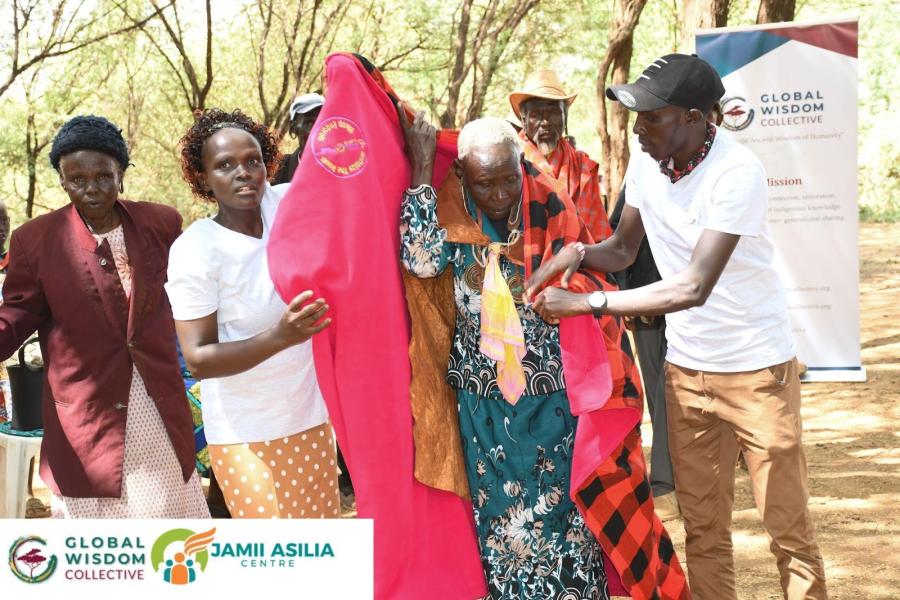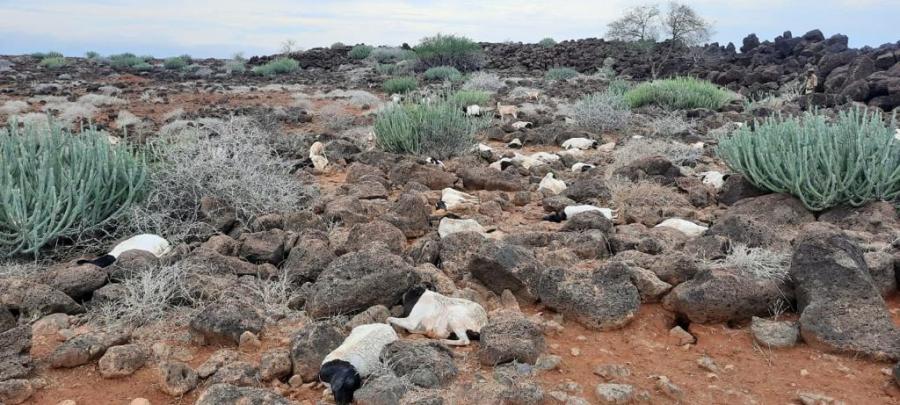The Kenya government's 1983 Kenya Official Handbook states that to better appreciate recent developments in the country, "it is useful to indicate some of the problems inherited by the first independent African Government led by the late President Kenyatta" (1983:31). The problems identified are (1) deep-rooted ethnicity; (2) differential development; (3) a secessionist movement in North Eastern Province; (4) a rigid, quasi-federal (majimbo) constitution; and (5) a host of social and economic problems, such as unemployment, lack of skilled manpower, flight of capital and foreign-dominated economy. The deep-rooted ethnicity, the book points out, is due to the lack of contact between the various communities that the colonial government, which was also responsible for differential development, maintained. What is happening to these problems in Kenya of the 1980s?
The Ethnic Factor
A look at Kenya's provincial map reveals that seven of the eight provinces are ethnically linked. On the basis of the 1969 census. Central Province was 96% Agikuyu, North Eastern was 96% Somali, Western Province was 88% Abaluyia, Nyanza was 63% Luo, Coast Province was 55% Mijikenda, Eastern was 54% Adamba, and Rift Valley was 51% Kalenjin. Some of these ethnic groups emerged as alliances of small contiguous groups during the colonial era. They include Abaluyia which was established in 1929, Kalenjin, which was adopted in the 1940s, and Mijikenda which is "a twentieth century invention" similar to Kalenjin and Luyia.
Before the British established their rule in Kenya, no single entity incorporated the territory of the present-day state. There were more than 180 self-identifiable groups that managed their own affairs - political, economic, educational, medical, recreational, religious, social, etc. Neighboring groups were in contact with one another through trade and warfare. The official government handbook acknowledges intergroup interactions, particularly in western, central and coastal Kenya. Such interactions were geographically limited to local areas due to restrictions of transportation and communication (see Table 1 for ethnic groups and subgroups).
Colonialism cannot be blamed, therefore, for lack of ethnic interaction. If anything, it could be blamed for policies that led to a three-tiered society of Whites, Asians and Africans. Among Africans, colonialism triggered ethnic associations which in fact led to the formation of larger ethnic alliances. For example, some ethnic-based associations included the Kikuyu Association formed in 1919, the Kavirondo Taxpayers Association formed in 1923, the Luo Union (East Africa) formed in 1925, the Kikuyu Central Association formed in 1925, the North Kavirondo Central Association (Luyia) formed in 1932, the Akamba Union formed in 1948, the Abalyuia Association formed in 1954, and the New Akamba Union formed in 1961.
Political parties both in the colonial period and after independence in Kenya were formed along ethnic lines. The official handbook points out that the Kenya African Democratic Union (KADU) was essentially a coalition of ethnic interests "...as articulated by the Maasai United Front, the Kalenjin Political Alliance, the Buluyia Political Union and the Coast Democratic Union". It also states that KADU advocated "...a quasi-federal constitution, majimbo, for fear of being dominated by the so-called major tribes, the Kikuyu and the Luo". The Kenya African Nation Union (KANU), which KADU opposed at that time (1961-64), was also a party dominated by ethnic groups, the Agikuyu, the Luo and the Akamba. At the end of 1964, KADU was dissolved and the members joined KANU, which is currently the only political party in the country. The formation of other political parties is unconstitutional.
Ethnic-based associations continue to exist throughout independent Kenya. All are concerned with the improvement of the economic, social and cultural conditions of their members. In 1971, a new ethnic-based association, formed by the alliance of Gikuyu, Embu and Meru peoples was established. Named GEMA (Gikuyu, Embu and Meru Association), its goals were to promote education, welfare and the spirit of brotherhood among the Gikuyu, Embu and Meru people. It was also to preserve, promote and refine these peoples cultural heritage.
GEMA became one of the most powerful ethnic-based associations in the country. It managed GEMA Ltd. holdings with plans to own and operate many businesses not only in the country but also elsewhere in the world. Representatives were sent to overseas countries including the US and Britain to enter GEMA in banking institutions, manufacturing and processing enterprises, shipping industry, airlines, land acquisition, hotels, and retail as well as wholesale businesses. GEMA's objective, was to own multinationals in Kenya or to be partners in business with them. It focused on awarding scholarships and supporting members' educations.
In short, GEMA had the potential to own Kenya from the ground up. Among its members, leaders and patrons were powerful Kenyan civil servants and cabinet members. The association encouraged other ethnic groups to develop similar plans and work along similar lines. This was GEMA's way of contributing to the development of modern Kenya. GEMA's leaders were invited by other associations to participate in fundraising activities. Some politicians and many other Kenyans became frightened of the group's political and economic potential.
In 1980, the government of Kenya banned all ethnic organizations - whether they were economic, political, social or recreational. The government's decision, in this respect, was similar to, if not more severe than, British Colonial decisions regarding ethnic ingenuity and creativity. The government appears to be adopting assimilationist and "melting pot" models of national integration and development. This is further supported by the use of English and Kiswahili as Kenya's only official and national languages in order to pave the way for the gradual disappearance of indigenous heritages, languages and cultures.
Social, Economic and Educational Development
Kenya has designated districts (counties) as the primary units of development. But as these districts reflect the ethnic composition of their provinces, development projects are used to promote the interests of powerful ethnic groups in many districts thus creating, or increasing, ethnic hostility and resentment. As a practical matter and in the face of limited financial resources, the government cannot afford to provide all needed services to all districts simultaneously. It cannot, for example, provide piped water to every household; it cannot provide employment to everyone who wants to work; it cannot provide electricity to every community, or secondary education to every child, everywhere at the same time. Yet these are some of the aspirations of most Kenyans.
To have water systems developed in some districts but not in others rewards ethnic groups that are powerful enough to influence funding decisions and discriminates against less powerful groups. To have factories and industries in some districts and not in others raises the same problem as do the location of universities and colleges, self-help (harambe) projects, road-building and paving projects and the placement of graduate and certified teachers. To have top government positions filled by individuals from only a few ethnic groups discriminates against others in the same way that making available employment opportunities only to members of some ethnic groups discriminates against the others. The list goes on and on. Because districts are linked to specific ethnic groups, differential development between districts should be interpreted as differential development between ethnic groups, or more simply as discrimination. Many Kenyans believe that this is what has happened in Kenya since independence.
Table 1. Ethnic Croup Distribution in Kenya
Number of Percentage of Ethnic
Subgroups Population in
per Ethnic the nation in: Totals
in 1979
Major Ethnic Group 1969 1979 (in
millions)
Groups
Agikuyu 3 20.63 20.90 3.20
Luo 1 14.26 12.70 1.94
Abaluyia 20 13.62 13.70 2.10
Akamba 1 11.22 11.10 1.70
Kalenjin 11 11.16 9.80 1.50
Gusii 6 6.57 5.20 .80
Ameru 8 5.19 5.50 .84
Mijikenda 9 4.60 3.30 .50
Somali 13 3.00 2.00 .30
Turkana 16 2.00 2.00 .30
Maasai 24 1.45 -
Aembu 1 1.11 .80 .13
Taita 1 1.02 .80 .12
Others 66 4.17 12.20(*) 1.87(*)
______ _______ __________ _________
Totals 180 100.00 100.00 15.30
(*) Includes the Maasai
Sources: Atiendo-Odhiambo 1977 Kenya Population Census. 1970: Kenya Official Handbook. 1983; Ogot: and Osgo.
Article copyright Cultural Survival, Inc.




